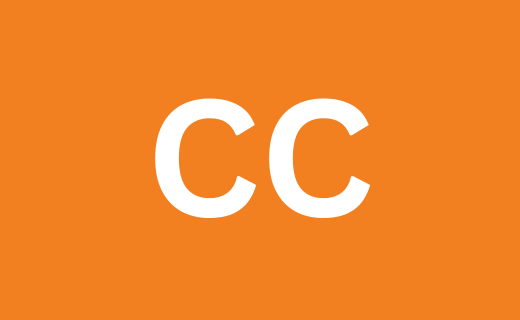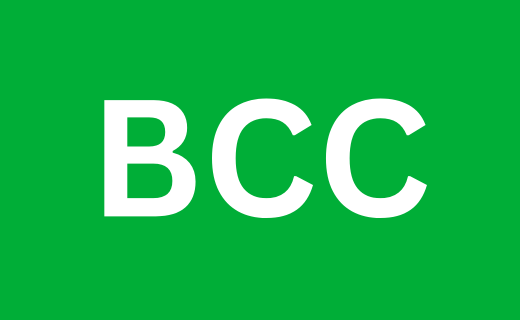Help article
If I Forward an Email, Does the Sender Know?

Sometimes, before sharing an email, one may think, “If I forward an email, does the sender know?” This question can be confusing and may prevent one from forwarding emails.
However, we have good news for you. In most cases, you can freely forward the email to anyone, and the original sender will not know what you did. However, there are exceptions.
In this article, we will explore the scenarios where the sender knows if you forwarded their email and how you can prevent this from happening, and the trouble you can get into if you forward an email without permission. Let’s dive in and stick around to learn about preventing legal trouble.
How the sender may know...
Let’s first look into a few primary email functions. While forwarding an email, there are two kinds of recipients and one receiver. Below is the breakdown of all three functions:



To: It refers to the person intended to receive the email, or the receiver.
CC: It means carbon copy. The recipients in the CC section receive an exact copy of the email and are visible.
BCC: BCC stands for blind carbon copy. BCC recipients also receive a precise email copy but are invisible to others.
Now, let's get back to the question, “If I forward an email, does the sender know?” The answer is, it depends on the recipient fields you use. If you mistakenly added the original sender in any of the fields above.
Although rare, few email systems allow senders to request read receipts. If you forward an email to someone with these enabled, the sender will receive a notification as soon as the receiver opens the email.
Tracking pixels can collect user data and behavior. Suppose these pixels are attached to the original email. In that case, the sender can easily estimate that the email has been forwarded by analyzing more than-expected open rates (more on this later).
How to track emails?
Let's understand the common methods used to track emails, so you can prevent the sender from knowing if you forwarded their email.
Tracking Pixels
As we discussed, tracking pixels are—as they sound—invisible to the naked eye because they are transparent—set-up pixels to collect user data and behavior. A remote server hosts the images, usually controlled by a third-party email tracking service.
Several email clients have found a way around the tracking by blocking any attachments from loading unless the receiver requests to load the image or attachment, which can impact the accuracy of email tracking services.
Tracking Server Logs
The tracking server logs the request directly from the recipient’s email client, such as Gmail or Outlook, to track details such as IP address, device type, email’s receiving date, opening time, and recipient’s location (sometimes).
Email forwarding can get you in legal trouble
Carelessly forwarding emails that contain sensitive information can be costly. GDPR (General Data Protection Regulation) and HIPPA (Health Insurance Portability and Accountability Act) take strong stances on how private or personal data is handled online. Forwarding emails containing sensitive information without the sender's consent can result in severe action.
Moreover, carelessly forwarding emails containing copyrighted sources or materials may cause you to infringe on intellectual property rights. Using copyright-protected content without proper authorization or credit is a severe offense.
Maintaining proper records from the person who sent the email to all who received it is critical in online communication. Forwarding emails for excessive amounts of time can make it challenging to find the original sender. Although there are no charges against it, this practice is highly discouraged.
Best practices for avoiding legal trouble
Now that you know the risks of forwarding emails without permission, let's look at a few ways to avoid legal trouble.
Ask for consent.
The easiest way to solve legal complications is to ask for consent from the sender. Before forwarding the email, send an email back to the sender asking for their permission and ensuring that there isn’t any sensitive data or other confidential information.
Netmanners clearly states against sending emails without the sender's information because it was sent to just you, emphasizing the power of consent.
Send a new email.
Sending a new email is better than forwarding it. Although forwarding the email instead of writing a new one requires less labor and hard work, it is safer and more professional.
Sending a new email overcomes all the forwarding rules and regulations by allowing you to be the sender. To make it even better, summarize the email in a short paragraph and then send it to them. Brief and clean emails usually get higher response rates.
Be transparent about your intent.
Another way to use it is to be clear about how and why you forward this email to the chosen recipient. It may require you to add a note within the context of the email clearly stating the reason behind the message.
Reread and review the email.
Even if you forward emails, you will not face legal troubles unless you share sensitive information like passwords, credit card information, or any other information that is supposed to be discrete from a particular group or individual. Otherwise, forwarding and sharing emails are perfectly normal.
Suppose the email you want to share does not contain sensitive information, and you are sure that all the information provided in this email is not confidential or restricted to them. In that case, you can share the email without hesitation.
Forwarding emails without letting the receiver know
If you do not want the receiver to know that they are receiving a forwarded email, you can edit out the redundancy and clutter. Be mindful of who you’re adding to CC and BCC. Do not add excess profiles in any field. If you sense a recipient is unnecessary, clip it.
Adding way too many recipients in the CC box can be distracting, and it can also be a concern for their privacy if they don’t know each other. It is also against email etiquette. You should only go with 5–6 in the CC. If you want to add more, you can use the BCC option.
Another thing that can make an email less likely to be forwarded is cleaning out the redundancy. Marketing emails and advertisements are usually longer. Cleaning the email from clutter can make it seem like you created it for that particular recipient.
Lastly, always double-check the attachments. The attachments can contain details such as logos or signs from the original sender, making it apparent that the email has been forwarded. Use your images or a different messaging option, such as a cloud service (Google Drive or Microsoft OneDrive) or a productivity app (Slack or Clickup), for pictures and attachments.
Conclusion
That concludes our article, and now you don’t have to second-guess “If I forward an email, does the sender know?” Usually, workplaces don’t have such strict tracking regulations, although it’s always better to be safe. However, forwarding a funny email to your friends or colleagues will unlikely lead to legal problems.
However, it is always wise to be safe and write a new email instead of forwarding the original one. It might be a little time-consuming, but it’s suitable for your safety and more ethical.
Everything you need to power up your email game in one place.
Start now for free. No credit card required.
